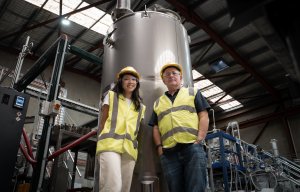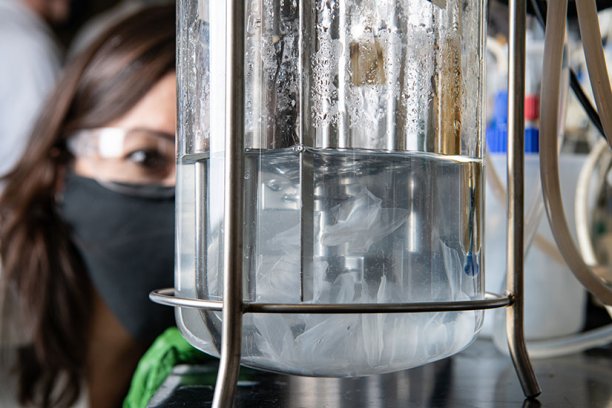
Nylon 6 enzymatic recycling success
What to do with the PET fibres used to manufacture textiles for clothing and carpet remains the issue.

28th July 2021
Innovation in Textiles
|
United States
Using enzymes may be a more sustainable approach for recycling PET polyester, according to researchers from the US Department of Energy’s (DOE’s) National Renewable Energy Laboratory (NREL) and the UK’s University of Portsmouth.
They are part of a consortium called BOTTLE – Bio-Optimised Technologies to keep Thermoplastics out of Landfills and the Environment.
BOTTLE is striving to address the problem of plastic pollution via two approaches:
-To develop energy-efficient, cost-effective, and scalable recycling and upcycling technologies.
-To design modern plastics to be recyclable by design.
The consortium’s new research paper addresses the challenge of plastic recyclability. While images of discarded bottles floating in oceans and other waterways provide a visual reminder of the problems posed by plastic waste, the lesser-considered issue remains what to do with the PET used to manufacture textiles for clothing and fibres for carpet.
The researchers have modelled a conceptual recycling facility that would take in a fraction of the three million metric tons of PET consumed annually in the United States.
The enzymatic recycling process breaks down PET into its two building blocks, terephthalic acid (TPA) and ethylene glycol. Compared to conventional fossil-based production routes, the research team determined the enzymatic recycling process can reduce total supply-chain energy use by 69-83% and greenhouse gas emissions by 17-43% per kilogram of TPA. Additionally, an economy-wide comparison of virgin TPA and recycled TPA in the United States shows that the environmental and socioeconomic effects of the two processes are not distributed equally across the supply chain. The proposed recycling process can reduce environmental impacts by up to 95%, while generating up to 45% more socio-economic benefits, including local jobs at the material recovery facilities.
The study also predicts that enzymatic PET recycling can achieve cost parity with the production of virgin PET, highlighting its potential to decarbonize PET manufacturing, in addition to enabling the recycling of waste PET-rich feedstocks, such as clothing and carpets.
The concept, if further developed and implemented at scale, could lead to new opportunities for PET recycling and create a mechanism for recycling textiles and other materials also made from PET that are not recycled today.
PET ranks among the most abundantly produced synthetic polymers in the world, with 82 million metric tons produced annually and roughly 54% of it used in the manufacture of textiles for clothing and carpet.
“From all the plastics that were produced since the 1950s, less than 10% has ever been recycled,” said Avantika Singh, a chemical engineer at NREL. “If we can capture that space – textiles, carpet fibres, and other PET waste plastics that are not currently recycled – it could be a true game-changer.”

Business intelligence for the fibre, textiles and apparel industries: technologies, innovations, markets, investments, trade policy, sourcing, strategy...
Find out more